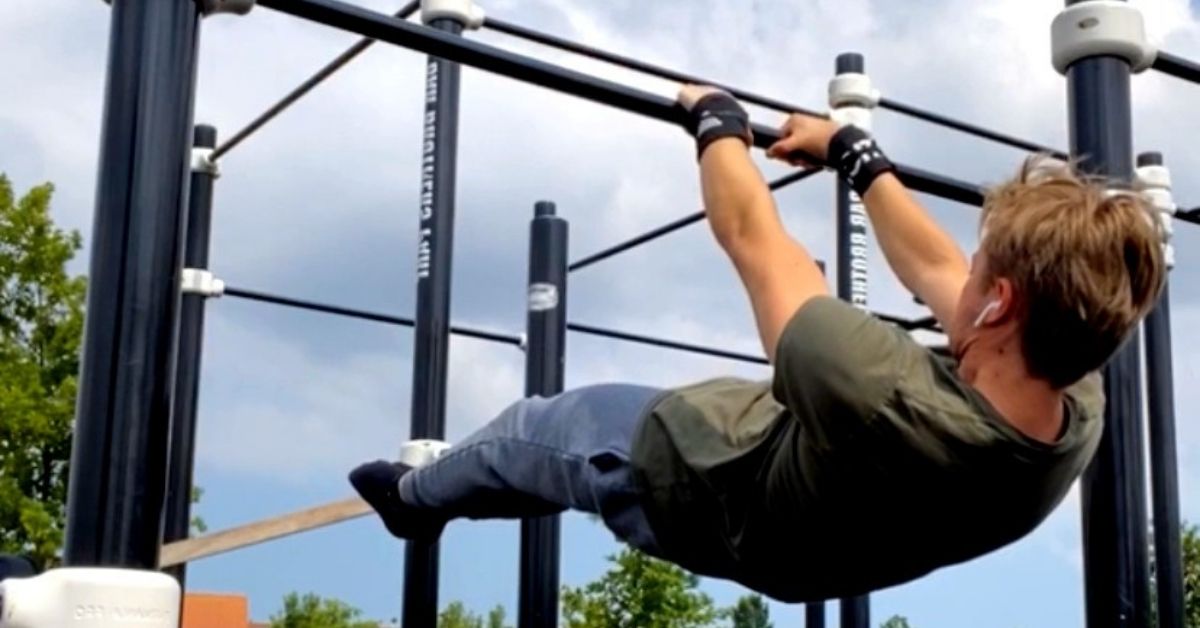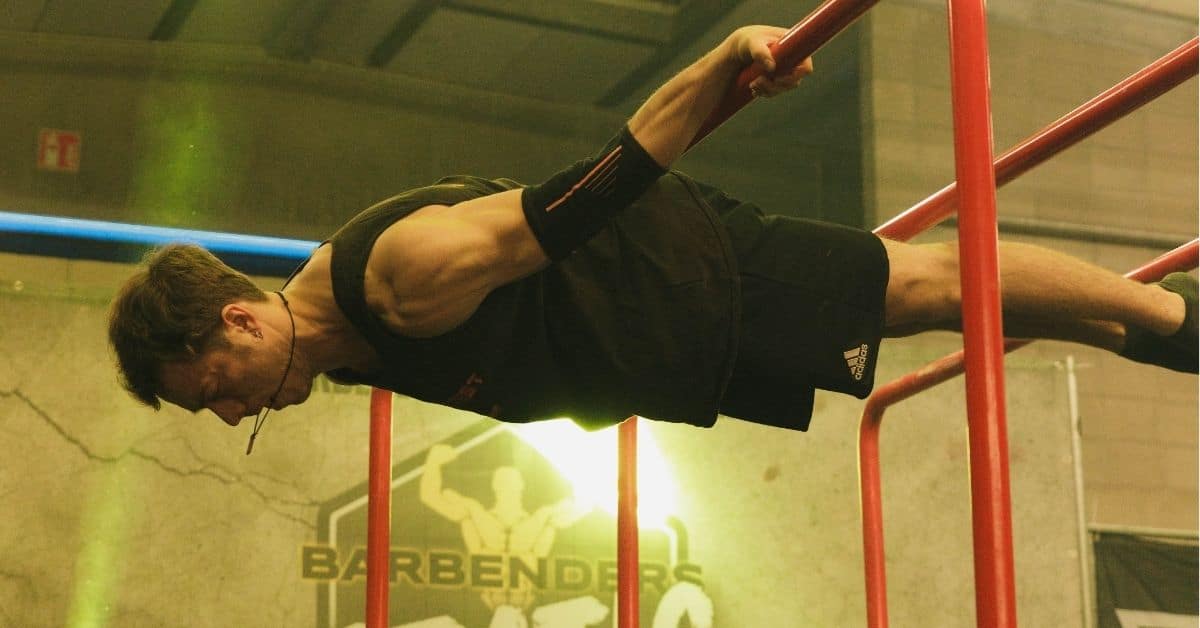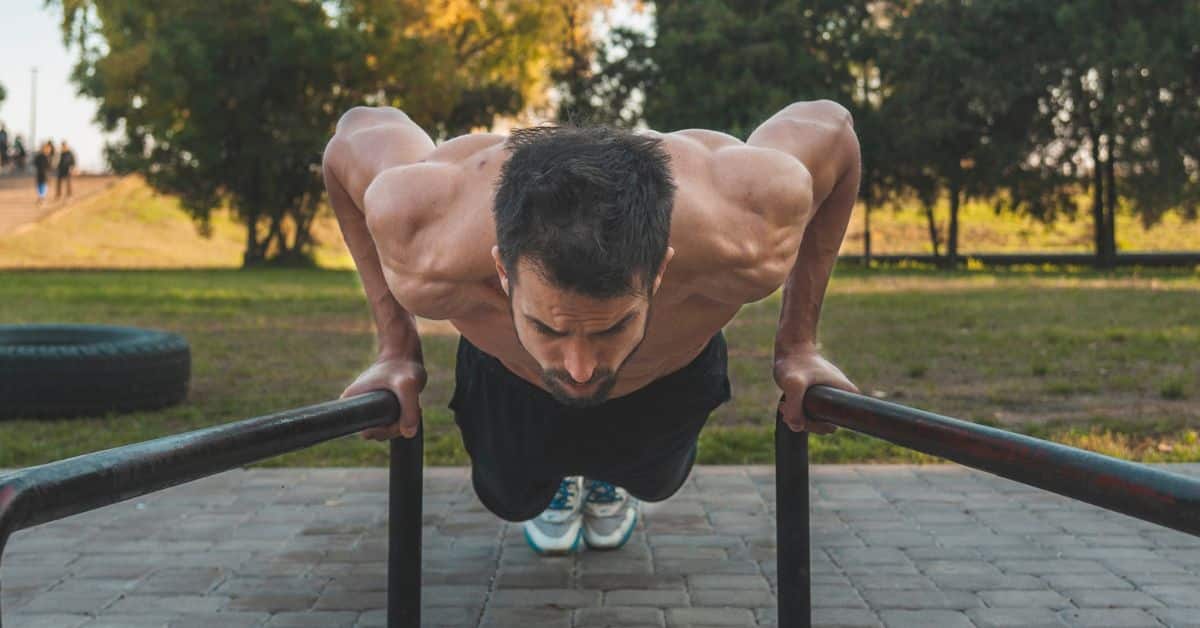After months of hard work, you finally mastered the front lever, and you think you can’t go any further, any harder than this. Well, you can, way harder, actually. In the world of calisthenics, the full front lever is just intermediate level. This blog post is a tutorial about the front lever touch, the next step after you reach the front lever.
Requirements
The only requirement to the front lever touch is a full front lever for 10 seconds at least. And be clean, it can’t be a sloppy front lever. Really master the front lever, first, before you move on. This skill is significantly more challenging, so make sure you are ready for it!
Understanding the Front Lever Touch
The skill itself is not hard to understand, and even when you look at it, it seems quite simple. It is called the front lever touch because you literally touch the bar with your waist while holding a front lever.
Just like the front lever, the front lever touch really challenges your lats, your core, and your arms. But with the touch, the muscles are really put to the test, much more than you might think.
Progressions
The next part in learning this skill will be about progressions. As for these progressions, I would say they are pretty traditional. The progressions are basically the same as with the normal front lever:
- Advanced Front lever touch
- Straddle front lever touch
- Half lay front lever touch
- Full front lever touch
When working with these progressions, make sure you master each until you are very comfortable with them. Moving on too quickly is definitely something you want to avoid. Performing a skill your body isn’t ready for can lead to some serious injuries. You might want to skip on that.
So, take it slow, and progress when you are ready.
Exercises
Now we know the progressions, it is time to move on to the exercises.
There are three different kinds of exercises to master this skill:
- Static holds
- Dynamic exercises
- Resistance bands
Perform these exercises with the progression you are at currently.
Just attempts
The first exercise I really recommend you to do is isometric holds, I just call them attempts, an attempt to do it. Here, you basically try to hold the hardest progression you can currently do.
So, for example, your level is advanced tuck front lever touch, you try to hold this progression for as long as possible. Once you see that this becomes too easy, you move on to the next progression.
In my opinion, this is the best way to get the front lever touch or any skill in general fast. Just by trying and trying only. Doing thousands of attempts will get you any skill eventually, no matter what!
Front lever pull-ups
The second exercise is the front lever pull-up. Although it might sound strange, a dynamic exercise for an isometric skill. But, dynamic exercises are crucial in your journey to the front lever touch.
That is why the front lever pull-up is a must-have in your training routine.
The front lever pull-up can, just like the regular front lever, be divided into different progressions, ranging from pretty mild to insanely difficult. For instance, the tuck front lever pull-up is fairly easy in comparison to the full front lever pull-up. The full front lever pull-up is even harder than the front lever touch.
So take a look at what level you are at and implement your progression in your workout routine.
Front Lever Touch With Resistance Bands
The last kind of exercise you must implement are exercises in which you use resistance bands. I have talked about them numerous times now. Resistance bands are your best friend when it comes to learning a new skill in calisthenics. It is a piece of calisthenics equipment, in my opinion, every calisthenics practicer should own.
Why are resistance bands such a great addition to your workouts:
- Letting you do exercises that are still too hard. By using resistance bands, you can practice the full front lever touch without actually being able to do it. This allows your body to use those certain muscles and to create the mind-muscle connection.
- Helping you learn the correct form. Resistance bands also assist in learning the correct technique, which is so important in the early phases of your journey. This is easily practicable without too much effort, all because of resistance bands.
- Progressing is easier. If you have multiple resistance bands, it is possible to adjust the assistance you get from them. So if you feel like you are getting stronger, switch to a weaker band. Try again and feel what it is like. Comfortable? Keep using this one. It is easier to progress with resistance bands than with different variations as progressions, which is common in calisthenics.
False grip
One major tip I got for you is to master the false grip. Mastering the false grip will help you significantly with this skill. Here is an image to demonstrate it.

With your wrists above the bar, the false grip helps you maintain a stronger and tighter grip, which is crucial for this skill. The better your grip, the better your performance with the skill will be!
But, learning the false grip does not happen overnight, it will take some time before your wrists can handle the pressure. So, take the time you need, and don’t rush this grip. You don’t want to injure yourself!
Frequency
The last thing I want to mention is something about your frequency when training this skill. The front lever touch is a really tough skill to learn and requires a lot of time and effort. So that means practicing often and really put in the work.
My advice is to train it whenever you can, and when you feel sore, you take a rest day. The more you train it, the better! However, always listen to your body when training such skills.
There you have it, a quick tutorial on how to achieve the front lever touch!






